|
Poet and art writer John Yau has a gorgeous new book about Joe Brainard, out with Rizzoli. Yau describes in vivid detail how Brainard produced thousands of lush multimedia pieces radiant with poignancy, wit, intimacy, and a sheer beauty that express Brainard’s unabashed affection for the world.
Tyhe Cooper reviews the book at The Brooklyn Rail. Patricia Hope Scanlan's small press Artery Editions has several gorgeous things either out or in the pipeline:
Covodes by Robert Hampson (a series of 19 experimental odes documenting the pandemic, with accompanying music, 2021); Le Madame (a broadsheet with art work by Louise Bourgeois, and poems by Deborah Levy, Mine Kalyan and Scanlan, 2022); The Pente, A Book of Woe by John Wieners (a second edition of Ace of Pentacles incorporating the changes Wieners requested to be incorporated all the way back in 1966 but hadn't been done since, including the title change; with an Introduction by Michael Seth Stuart and an afterward from Jeremy Reed, 2023); Brighton Blues: A Tribute to Lee Harwood with poems by Jeremy Reed, poem by Anne Waldman, letters from Lee Harwood and John Ashbery, an essay from F.T. Prince and art from Derek Jarman., as well as an early recording of Lee Harwood reading his poems. Ron Padgett: Dot
Featuring Padgett and Anselm Berrigan Ron Padgett reads from his new book Dot (Coffee House Press), followed by a discussion between Padgett and Anselm Berrigan. Wednesday, December 14, 2022, 1 p.m. Eastern / 10 a.m. Pacific REGISTER HERE Ron Padgett’s How Long was a Pulitzer Prize finalist and his Collected Poems won the LA Times Prize for the best poetry book of 2014 and the William Carlos Williams Award from the Poetry Society of America, from whom he also received the Frost medal. His translations include Zone: Selected Poems of Guillaume Apollinaire and Blaise Cendrars’ Complete Poems. His poems were used in Jim Jarmusch’s film, Paterson. Padgett will be reading from his new book, Dot (Coffee House Press). Anselm Berrigan is the poetry editor for the Brooklyn Rail, and author of a number of books of poems, most recently Pregrets, from Black Square Editions. Poet, artist, publisher, and scholar Bernadette Mayer died on November 22nd 2022, at the age of seventy-seven, at her home in East Nassau, New York. She will be so missed. Here's to her wonderful work being read and performed and taught and loved for a long time to come.
Artforum have published her obituary: https://www.artforum.com/news/bernadette-mayer-1945-2022-89708. We were so sad to learn that Bernadette Mayer died in late November, and send love and strength to those who knew her. Here's to her wonderful work being read and performed and taught and loved for a long time to come. Artforum have published her obituary: https://www.artforum.com/news/bernadette-mayer-1945-2022-89708.
*** Here's a December update from the Network, plus, because it's December, a link to Schuyler's poem and Andrew Epstein's thoughts about it - enjoy. Jordan Davis has a new pamphlet out with Sam Riviere’s If a Leaf Falls Press, Hidden Poems (this is a selection from Jordan's 2023 collection Yeah, No, forthcoming from MadHat): https://samriviere.com/index.php?/together/if-a-leaf-falls-press/. Jordan has also recently written about Ted Berrigan’s exuberant and idiosyncratic prose for the Poetry Foundation: https://www.poetryfoundation.org/articles/158608/what-do-i-say-next-fast . Anne Waldman's Bard, Kinetic will be published in January 2023, with Coffee House Press, and is available for preorder. In Bard, Kinetic, Waldman assembles a layered compendium of essays, letters, poems, and interviews that form a portrait of her life and praxis as a groundbreaking poet. Waldman charts her journey through a maelstrom of radical artistic activity, from growing up in Greenwich Village to creative partnership with Allen Ginsberg and touring with Bob Dylan. She recalls founding the Poetry Project at St. Mark’s Church and later the Jack Kerouac School of Disembodied Poetics at Naropa University, and she discusses the political and artistic philosophies that guide her activities as writer, activist, performer, instigator, and Buddhist practitioner. Throughout Bard, Kinetic, Waldman pays homage to friends and collaborators including Amiri Baraka, Lou Reed, John Ashbery, and Diane di Prima. Vincent Katz's Broadway for Paul is now out in paperback, with Knopf. Elaine Equi has talked about how this 'virtuoso collection' highlights 'the pleasure of sharing spaces, ideas, and art', whilst Paul Vangelisti describes the poetry as a 'voice in the grand tradition of New York poetry, from Walt Whitman to Frank O’Hara, engaging in ‘equable’ conversation (Whitman’s term) with the city’s people and places'. Tia Shearer Bassett, a theatre-maker based in the Washington, DC area, performs a one-actor, Zoom theatre version of Kenneth Koch's Edward and Christine. It premiered in the spring of this year, and Tia is now beginning to perform it monthly (and by request). The next show is on Sunday 11th December at 3.30pm EST: https://www.eventbrite.com/e/edward-christine-tickets-296927176177. You can read a review of the show here: https://dctheaterarts.org/2022/05/20/fun-and-intimate-edward-and-christine-plays-live-on-line/. The Flow Chart Foundation is holding a group reading-through/thinking-through of John Ashbery’s book-length Three Poems. They will read the entire book as a group over 13 days, from December 1st through December 13th. They'll be inviting you later to join them for a concluding live, free virtual event on Friday, December 16th at 1pm EST. Daniel Kane will lead the online discussion, which will take place over Twitter and Instagram. More details here: https://www.flowchartfoundation.org/collectiveashbery. In mid-October poet Paolo Javier spent an hour talking about his New York origins story along with his new work: "experiences with language": It was a delight (in every Brainard-esque sense of the word) to talk with former Queens Poet Laureate, sound poet, and visual artist Paolo Javier, author of the spectacular O.B.B. (Nightboat, 2021), the time at the end of this writing (2004), and Court of the Dragon (2015), as well as the forthcoming True Account of Talking to the 7 in Sunnyside (Roof Books, November). Our conversation was about conversations - about discovering New York School writers through reading, through personal connection, through moving in and around the city, through writing; about outsider status, the paraliterary, the not-quite-poem; about 'schools' as places of learning, of discovery, of connection, of experimentation, of the childlike; about Queens, resilience, and the spirit of the New Yorker; about Frantz Fanon, Joe Brainard, Frank Lima; about 'unheard rhythms', comics, collaboration, and collage... You can watch/listen to the interview by clicking the image above, or on our Youtube channel.
Alice Notley: A Couple of Things I See in Get the Money!: Alice has kindly shared the opening remarks from our online launch of Ted Berrigan's Collected Prose - her gorgeous thoughts on this gorgeous book can be read here. New work from Nightboat Books: Chia-Lun Chang's Prescribee (November 15) is in the lineage of Tender Buttons and The Tennis Court Oath, a transformation of the familiar ingredients of everyday life into a wild and alchemical language; Anne Waldman and Emma Gomis meanwhile bring us New Weathers: Poetics from the Naropa Archive, a series of lectures asking how poetics might embolden deeper engagements with the world. New work from Coffee House Press: Ron Padgett's new collection, Dot, full of wit and wonder, is out today! Ron is reading this afternoon, 4pm ET, with the Yale Literary Magazine (Zoom link: yale.zoom.us/j/95862472840). New work from Fonograf Editions: Alice Notley's The Speak Angel Series and Early Works will be released in February 2023 and are available for pre-order now. The Speak Angel Series is composed of six full-length books in various forms: it is meant to be read for plot, pleasure, musical experience, wisdom and truth. The books present something like a cosmology in the philosophical sense, a reading of existence and of death. Early Works, edited by Nick Sturm, collects Notley’s first four out of print poetry collections, along with 80 pages of previously uncollected material, and includes original collection cover artwork by Philip Guston, Philip Whalen and George Schneeman, among others. New work from Two Rivers Press: Peter Robinson's Retrieved Attachments,about people and places, friends and loved ones, mentor poets and artists, will also be published in February 2023, but is available to pre-order now. Jordan Davis has a new pamphlet out with Sam Riviere’s If a Leaf Falls Press, Hidden Poems (this is a selection from Jordan's 2023 collection Yeah, No, forthcoming from MadHat): https://samriviere.com/index.php?/together/if-a-leaf-falls-press/. Jordan has also recently written about Ted Berrigan’s exuberant and idiosyncratic prose for the Poetry Foundation: https://www.poetryfoundation.org/articles/158608/what-do-i-say-next-fast . Anne Waldman's Bard, Kinetic will be published in January 2023, with Coffee House Press, and is available for preorder. In Bard, Kinetic, Waldman assembles a layered compendium of essays, letters, poems, and interviews that form a portrait of her life and praxis as a groundbreaking poet. Waldman charts her journey through a maelstrom of radical artistic activity, from growing up in Greenwich Village to creative partnership with Allen Ginsberg and touring with Bob Dylan. She recalls founding the Poetry Project at St. Mark’s Church and later the Jack Kerouac School of Disembodied Poetics at Naropa University, and she discusses the political and artistic philosophies that guide her activities as writer, activist, performer, instigator, and Buddhist practitioner. Throughout Bard, Kinetic, Waldman pays homage to friends and collaborators including Amiri Baraka, Lou Reed, John Ashbery, and Diane di Prima. Vincent Katz's Broadway for Paul is now out in paperback, with Knopf. Elaine Equi has talked about how this 'virtuoso collection' highlights 'the pleasure of sharing spaces, ideas, and art', whilst Paul Vangelisti describes the poetry as a 'voice in the grand tradition of New York poetry, from Walt Whitman to Frank O’Hara, engaging in ‘equable’ conversation (Whitman’s term) with the city’s people and places'. Tia Shearer Bassett, a theatre-maker based in the Washington, DC area, performs a one-actor, Zoom theatre version of Kenneth Koch's Edward and Christine. It premiered in the spring of this year, and Tia is now beginning to perform it monthly (and by request). The next show is on Sunday 11th December at 3.30pm EST: https://www.eventbrite.com/e/edward-christine-tickets-296927176177. You can read a review of the show here: https://dctheaterarts.org/2022/05/20/fun-and-intimate-edward-and-christine-plays-live-on-line/. Ted made everything he did be a work of art -- everything he wrote down for any reason. He never just scrawled. His prose exhibits this propensity of his; it was as much a part of him as his humor was. I'm not like that except unconsciously, so I'm in awe of it. Ted was deliberate. The strangeness and devotion of something like the Basho journals manuscripts, which I sold at the Phoenix bookstore, but he made the package, consisting of the Penguin translation by Nobuyuki Yuasa that he changed (assisted) into terrific English, that copy of the book, with his black-ink corrections, along with a typescript or typescripts perhaps, decorated? Nick will know. Ted kept making booklets out of the typescripts or their copies, I have one with Victorian flower stickers on it. He would lovingly put such materials together, and I would go to the Phoenix and chat up Bob Wilson (always a pleasure) and Get The Money! I see this care, this saving of things, all the folders and the folders remade by me into further folders, in the book we have just edited and published . . . And I see . . . For example, the implication that a whole poem by a poet reviewed was itself a review (like when you read a poem you like aloud to a friend); or that a rearrangement of lines from the book by the poet being reviewed, was a review, in fact a way of having a dialogue in the language of poetry, which is the most relevant one finally, isn't it? You can say what's really being said by highlighting lines, and you can talk to lines with other lines -- the criticism is already in the poetry . . . Or I recall rescuing "Brain Damage" from the trash -- it is outrageous and offensive and out-to-lunch, but I rescued it! Or I remember when he cut up "Ten Things About the Trip to Boston" into strips, having found an old typescript of it, an original archival sheet typed way before the book Back to Boston, with contributions also by Ron Padgett and Tom Clark, was published by Telegraph Books. He was sort of falling asleep but asked me to find an envelope to put them in, and I counted them and said, 'There are only nine.' Then he dictated to me the missing "Thing" – the final one -- and I wrote it on the outside of the envelope. A new item of potential exhibit for the folder "Longer Works of the More Academic Type"! This was fun . . . Or the outrageousness of everything we did in the 70s, so I can barely read those Journals (NOTE: Just reread them; they’re fabulous) . . . My embarrassment at "The Arrival Report," being its subject, so I didn't see the place at the very end, in this edition, where Gisele's name didn't get properly spelled out (Pardon me, Gisele Brotherston, friend in Wivenhoe!). Get the Money! is a book about life and art being coincident, all the time. Ted was always making art (like Joe, and Andy -- Joe Brainard, Andy Warhol). And he was very funny. "Longer Works Of the More Academic Type" was something he wrote on a folder in which he kept some of the works presented in what is now Get The Money! When the folder fell apart about ten years ago (I had carted everything he'd written, across the ocean, a long time before) I just rewrote the title on a new folder. Over the years everything in it -- all the originals -- have become art. They look old, and yellow, and some of them are from newspapers. Originals of fliers. Pages of The Poetry Project Newsletter cut out and made into booklets with magic markers and glitter. This is what an archive is, like ancient art is. Things becoming more beautiful and interesting through time. The work in itself is that too. This is possibly the only thing time is good for. I now in fact like Brain Damage: before, I only rescued it. I love everything he wrote for The Poetry Project Newsletter. Before, it was what was going on. But it's art, obviously. Tributes to people and things no one knows about now, because of the weirdness of mainstream decisions as to what is "great" -- those tributes are very poignant. I would like for George and Joe to be around for this. There is an entire incomprehensible letter, probably to Bernadette, never typed or sent, on the other side of Something, maybe two Somethings, in the original mss of Longer Works Of the More Academic Type. Just to say. Lita Hornick. The Beeks. The N.Y. Jets. The prose is measured, almost metered, in different ways. It's often like poetry. Or like talking. Or like Boswell's Johnson. Or like being with Ted. The secret is presence, Or, presence is the secret to everything. Offside, he continues to help Anselm do his math homework by taking the telephone apart. He essentially does Eddie's homework for him, under the guise of showing him how to write neatly between margins. He is amusing himself. He is caring. About every single thing. As he finds new friends even now: Nick Sturm for example. Yasmine. Rona. And Garrett of course. We respond back with love.
P.S. Ron has sent us some further information about "Brain Damage," that Larry Fagin called a 1970 mimeo book Brain Damage (in homage?), that a small magazine that ran for two issues was called Brain Damage, and that Ron's old Columbia roommate Eddie Kaim, well his dad worked for the AMA Journal, portions of which Ted cut up into "Brain Damage." Somewhere in all of this information Alice Neel and Jane Freilicher and Red Grooms sit serenely, having been reviewed in ART News. Jim Brodey. Harry Fainlight. Anselm Hollo. Joe Ceravolo. Blurbed, introduced at readings, obited . . . Where was the review of Joel Oppenheimer published? How old was Jim Carroll, really, at any time? Ask Steve Facey. Steve Carey. Ed Sanders. Lorenzo Thomas. Can Anne Waldman's character really be explained by The Great Constella's Aries horoscope? Who's buried behind Lufkin's Diner, for chrissakes? Maybe Frank knows by now. Too many names? Too many? Didn't you ever know anyone in your life? P.P.S. I’ve been re-rereading the book for the last two days, and it’s so good. So alive . . . so inspiring. It isn’t ancient art, I repeat: it’s utterly alive. Alice Notley, Sept 2022 What We Talk About When We Talk About the New York School: Online Symposium (September 2022): For pandemic-related and other reasons, lots of our members were unable to travel to Paris for our spring symposium. We held an online symposium in late September, in order to hear from some of the poets and scholars in question. The symposium featured poetry readings from Greg Masters and Matt Proctor, and talks from Wojciech Drag, Jane Hertenstein, Susannah Hollister and Emily Setina, Marcella Durand, and Molly Murray, as well as some free-flowing discussion and questions at the end. The programme of talks and readings is attached, and you can watch the event on our website or our Youtube channel.
Get the Money! Book Launch Event with Alice Notley, Anselm and Edmund Berrigan, and Nick Sturm (September 2022): it was a total delight to host a book launch event celebrating the recent publication of Ted Berrigan's collected prose. If you couldn't make it, you can watch the discussion, featuring short talks from each of the editors followed by open discussion, on our website or Youtube channel. Anne Waldman has a new book, New Weathers: Poetics from the Naropa Archive, co-edited with Emma Goimus, out in November with Nightboat. She has also written the libretto for Black Lodge, with music by David T. Little, which premiered this weekend at the Philadelphia Film Center: https://www.operaphila.org/whats-on/in-theaters-2022-2023/black-lodge/. Congratulations Anne and Emma! We have two online events coming up in September:
1) Friday September 23rd: we'll be hosting and recording an online panel with presentations and readings by several of our members who were unable to attend the Paris event in April. This won't be a live event but we'll be recording it and will share the discussion and talks/readings as soon after the event as we can. 2) Sunday September 25th, 5pm UK / 6pm Paris / midday East Coast: an online conversation with Nick Sturm, Alice Notley, Edmund Berrigan and Anselm Berrigan about Get the Money!: The Collected Prose of Ted Berrigan, 1961-1983, which will be published by City Lights on September 13th this year. Please register here: https://www.eventbrite.co.uk/e/get-the-money-an-online-conversation-tickets-411418232007. We'll record the discussion for anyone who can't watch live and share it on our website in due course. Below are a few further things that might be of interest: - Seamus Perry and Mark Ford discuss the lives and works of Frank O’Hara and John Ashbery: https://www.lrb.co.uk/podcasts-and-videos/podcasts/close-readings/on-frank-o-hara-and-john-ashbery - Here's a link to the trailer of Patrick Pfister's wonderful-looking documentary, Poetry, New York: https://www.patrickpfister.com/ny2. - Pioneer Valley Poetry Productions announces a series of four unique Zoom Writing Workshops on Wednesday evenings, September 7, 14, 21 and 28 from 7-9 EST. All classes will be taught by Anselm Berrigan. For further information and/or to enroll, contact Anselm at [email protected]. This class will explore writing by painters (and a few sculptors, filmmakers, and other curiosities) – talks, interviews, statements, essays, notes, lists – in order to engage their questions and methods of composition. Writings by Philip Guston, Stanley Whitney, Amy Sillman, Alice Notley, John Yau, Moyra Davey, Martin Wong, Adrian Piper, Joe Brainard, Rackstraw Downes, Thornton Dial, Kara Walker, Nathaniel Dorsky, Agnes Martin, & Pauline Oliveros, among others, will be considered and utilized. Workshops are priced on a sliding scale between $35-$50 per class session. - The Flow Chart Foundation is hiring! They're looking for a part-time Archivist and Librarian, and a part-time Program Associate. More details on their website: https://www.flowchartfoundation.org/jobs. Charlotte Rampling, Jean-Luc Goddard, Agnes Varda, Nathanial Hawthorne, and Emma Goldman walk into a Bowling Alley….
Directed by Tony Torn, and produced by Lee Ann Brown, Bernadette Mayer's unpublished play, Famous People, premiered on film at the Boog City Festival in February 2022. In celebration of Mayer's birthday, you can watch the film here: https://vimeo.com/707934586 Bernadette Mayer is the author of over 27 collections, including most recently Works and Days (2016), Eating The Colors Of A Lineup Of Words: The Early Books of Bernadette Mayer (2015) and The Helens of Troy (2013), as well as countless chapbooks and artist-books. She has received grants from The Guggenheim Foundation, Creative Capital, National Endowment for the Arts and the Foundation for Contemporary Arts. She is also the recipient of the 2014 Shelley Memorial Award from the Poetry Society of America. From 1980-1984, she served as the director of the St. Mark's Poetry Project, and has also edited and founded 0 to 9 journal and United Artists books and magazines. She has taught at the New School for Social Research, Naropa University, Long Island University, the College of Saint Rose, Miami University and at University of Pennsylvania as a Kelly Writers House Fellow. Her influence in the contemporary avant-garde is felt widely. Tony Torn is an actor, director, and producer who has worked extensively for the past 30 years in theater, film, and television, in both traditional and experimental projects. Known for his extensive work with legendary theater artists Reza Abdoh and Richard Foreman, Tony was the founding director of Bill Talen’s Reverend Billy and The Church of Stop Shopping (now in its 20th year), and created and starred in the absurdist theater/punk rock mash-up Ubu Sings Ubu with co-director Dan Safer. Tony currently teaches acting at NYU and MIT, and manages Torn Page, a private event space in New York City named in honor of his parents, the award-winning actors Rip Torn and Geraldine Page. Lee Ann Brown is the author of Other Archer, which also appears in French translation by Stéphane Bouquet as Autre Archere (Presses Universitaires de Rouen et du Havre, 2015), In the Laurels, Caught (Fence Books, 2013), which won the 2012 Fence Modern Poets Series Award, as well as Crowns of Charlotte (Carolina Wren Press, 2013), The Sleep That Changed Everything (Wesleyan, 2003), and Polyverse (Sun & Moon Press, 1999), which won the 1996 New American Poetry Competition, selected by Charles Bernstein. In 1989, Brown founded Tender Buttons Press, which is dedicated to publishing experimental women’s poetry. She has taught at Brown University, Naropa University, Bard College, and The New School, St. John’s University, among others. Brown has held fellowships with Teachers & Writers Collaborative, Yaddo, Djerassi, the MacDowell Colony, the International Center for Poetry in Marseille, France, the Howard Foundation and was the Judith E. Wilson Poetry Fellow at Cambridge University. She lives in New York. Our Paris symposium was a festival of listening and conversation, gently themed 'what we talk about when we talk about the New York School'. You can find the programme of speakers (including titles of talks, abstracts, and speaker bios) here. There is also a Twitter thread that unfolded during the day on our account (@NYSSNetwork).
Things we talked about...
In the evening, we relocated to Michael Woolworth's atelier, where Olivier Brossard read from his translation of The Tennis Court Oath, Abigail Lang read from her translation of A Nest of Ninnies, and Stéphane Bouquet read from his translations of James Schuyler’s poetry. Lindsay Turner then read from Songs & Ballads, A Fortnight, and from new and unpublished work; she also read a translation of a poem by Stéphane Bouquet. Lee Ann Brown headlined the evening, reading poems including ‘Poem for Joe Brainard’, ‘You are Not Gorgeous and I Am Coming Anyway’, and ‘Portal’; she was also joined by Stéphane, who read his translations of three of her poems, and by Sabine Macher, who read her translations of Lee Ann’s work. Footage of the symposium talks and of the poetry evening will follow soon! We remain indebted to Olivier Brossard for his stellar co-hosting of this event - thank you Olivier! At our inaugural symposium in Paris, in April 2022, Tony Torn discussed his production of both the 1951 and 1953 versions of Frank O'Hara's play Try! Try! presented back to back under the title Try! Try! Try! at the Polyphonic Poetry Festival in 2018. He paid close attention to how O'Hara specifically wrote, and then rewrote, the text in each case to suit his collaborators, including John Ashbery and Violet Lang in the 1951 version, and Larry Rivers in the 1953 version.
You can read the play(s) here: try__try__twice.pdf You can view the performances, featuring Tony himself, here: https://vimeo.com/701534574/3baac71944. Tony Torn is an actor, director and teacher based in New York City and Asheville, North Carolina. With Lee Ann Brown, he co-produced the Polyphonic Poetry Festival in June, 2018, presented at Kettles Yard and at the Judith E. Wilson Center at Cambridge University. He has recently been teaching undergraduate acting at MIT and at the Playwright Horizons Theater School (Tisch-NYU). Where: Zoom - register here
When: Monday 18th April 6PM-7:30PM Join Poets @ Pace for their Spring 2022 event, featuring celebrated poet and essayist Maggie Nelson as she reads from her work and answers questions in a Q&A. From time to time, The Flow Chart Foundation offers a Gathering, a space for presentations and networking around topics related to John Ashbery, his work, and his circle of artists, influences, and legacy. Call for Presentations
On the 60th anniversary of the publication of Ashbery’s The Tennis Court Oath, and what would have been Ashbery’s 95 birthday, The Flow Chart Foundation will be hosting an inaugural Gathering at its Ashbery Resource Center and Flow Chart Space (348 Warren Street, Hudson, NY 12534). We will take a new look at The Tennis Court Oath, and at how Ashbery at 95 continues to inspire, confound, and entrance. How might Ashbery’s work continue to be relevant and inspirational in this moment and beyond? The Gathering will take place on Sunday, July 31, 2022, pandemic-permitting, following The Flow Chart Foundation’s annual “Night of Neo-Benshi” at Hudson Hall opera house, located across the street and taking place the evening of July 30th. We invite poets, writers, scholars, artists, and readers to submit proposals for presentations of any kind about, in response to, or in dialogue with The Tennis Court Oath and/or Ashbery’s work now and going forward. One may propose presentations for either or both. These may include papers, performances, readings, or showings, and should be conceived to be approximately five to ten minutes in length. Submit proposals HERE. DEADLINE: April 15, 2022 MORE INFORMATION CAN BE FOUND HERE: https://www.flowchartfoundation.org/gathering Celebrate the early release of Paolo Javier's O.B.B. a.k.a. The Original Brown Boy, completed with artists Alex Tarampi, Ernest Concepcion, and Francis Estrada (original cover), along with the debut of the brilliant experimental filmmaker Lynne Sachs’ short video, Swerve, which adapts poems from the book.
The pop-up launch will take place on Sunday, October 17, @ 2pm ET at Moore Homestead Playground in Elmhurst, Queens—a neighborhood park and one of the locations of Sachs’ video—where Javier will also be joined by poet and Nightboat publisher Stephen Motika, Nightboat author Aldrin Valdez, and the cast and crew members of Swerve--Emmy Catedral, ray ferreira, Inney Prakash, Jeff Preiss, Juliana Sass, and Priyanka Das. Moore Homestead Playground is located on the corner of Broadway, 45th Ave, & 82nd St, and just off the Elmhurst Ave R train and Q60 and Q32 bus stops. Copies of O.B.B. will be available for purchase. Swerve will be playing as a one-day only video installation inside of HK Food Court, located across from Moore Homestead at 8202 45th Avenue, from 12 noon to 6 pm. In her new work, Lynne Sachs adapts a sequence of poems from O.B.B. while paying homage to Elmhurst, Queens, and re-imagining Lucretian poetics for the pandemic and post-Covid age. This event is generously funded by NYFA’s City Artist Corps Grant, and co-sponsored by the Queens Museum. F R E E and open to the public! Call for Papers “Eileen Myles Now”: Special Issue of Women’s Studies: An Inter-Disciplinary Journal Edited by Rosa Campbell, Joel Duncan and Jack Parlett This special issue of Women’s Studies aims to bring together new and exciting scholarship on the work of Eileen Myles. From their early involvement with the St. Mark’s Poetry Project in New York City in the late 1970s, to their breakthrough success in 2015 with the Ecco/HarperCollins publication of I Must Be Living Twice: New and Selected Poems and republication of their 1994 book Chelsea Girls, Myles has operated at the intersection of multiple traditions: the New York School, queer and trans feminisms, autofiction, and performance. While there is an abundance of popular writing about Myles, there remains a gap in academic engagement with their long and multi-faceted career – a gap that this special issue seeks to begin filling. We invite proposals from all scholars on any aspect of Myles’ work. As editors, we are mindful of the tension at play in publishing an issue of Women’s Studies on a writer who identifies as trans and – as Myles puts it in an interview – as a “‘they’ lesbian.” We are committed to featuring work in the issue that reflects this, and as such we particularly welcome abstracts from trans and non-binary scholars, as well as abstracts that explore Myles’ work from a trans studies perspective. Please send abstracts (250 words) for proposed articles (7,000-8,000 words), as well as shorter abstracts (100 words) for proposed book reviews (circa 2,000 words) of works related to Myles, along with a short C.V., to [email protected] by November 20, 2021. We will send out notifications to authors by December 20th, 2021. The deadline for submission of articles and reviews will be April 1, 2022. You can download a PDF copy of this Call for Papers below.
This essay was written, in slightly different form, for the panel “No More Secrets: The Poetry Project in the 1980s,” at a 2012 conference on Poetry & Poetics of the 1980s, at the National Poetry Foundation, University of Maine. It was first published in Local Knowledge #8, 2020. The Poetry Project in the ‘80s was a time when we weren’t—or felt we weren’t—under scrutiny. So here was a freedom that fueled a lot of poetry. We had magazines and they looked alike, because they were all done on a typewriter, with no choice of font. Your poems looked like Eileen’s and Alice’s and Ashbery’s and Ron’s and mine. We weren’t distracted by production values.
Or by career possibilities. We didn’t imagine a career in poetry—even those with great ambitions didn’t see how that might work out. No matter how serious you were about poetry, there just weren’t careers at that point. No one thought they would make a living as a poet. There was definitely the feeling that you had to choose between poetry and a “straight” life. We rejected a straight life—of course! You didn’t have a career: you were a poet! A lot of my posse of poets didn’t go to college, or dropped out or went to third-rate schools. We wanted to be the raw and untrained genius who wrote our works of raw genius on the way to the reading. It was similarly uncool to have a beautifully produced book. The overall aesthetic of the late ‘70s into the ‘80s was to be amateur/casual/rough/punk, and that permeated the Project. If you had a perfect-bound book, you either had money or a mainstream publisher, and no one respected that. The Poetry Project in the ‘80s was somewhat of an outlaw culture, fueled by amphetamines and heroin. We thought anything could happen at a reading. Here’s a few sentences from a story called “Radar Love” by Johnny Stanton, published in Transfer, Vol 2, #2, Fall/Winter 1989-90, edited by Gary Lenhart. “He opened the parish hall door. Lots of people were already inside, waving to each other and laughing out loud. ... Everyone talked at once. What was going on in the poetry world? Who slept with whom? The latest big fight. Changing sexual affiliations. That awful article in the Voice. Censorship. The New York Times. Sun and Moon Press. The Yale Poetry Prize. / People drifted outside for air, beer and cigarettes. The night had dipped into a great circle. Talk. Talk. Talk.” In the story, the reading—by Alice Notley—leads to sex, a road trip, and death. Anything could happen in poetry! Talk, talk, talk ... and collaborate. I remember Gary Snyder saying that in the ‘50s he and others would hitchhike for days to have a conversation with someone of like mind. That was easier to find in the ‘70s and ‘80s but there was definitely the sense that it had to be found in New York City. It was pre-Internet, after all, when it seemed hit-or-miss to find anything: poems, poets, a home. Therefore people wanted to live in New York and poetry was a cool way to be here. We mostly lived near St. Marks Church and near each other, and didn’t have to work that much to maintain our hundred-dollar-a-month apartments, so we were in and out of each other’s lives all the time. The atmosphere of poetry was at least as important as any particular poem—that we were all poets, doing poetry all the time. If we had a theory, it was that everyone was a poet, or could be and should be, and that art was produced by the many, not the individual. Talk, talk, talk— and collaborate. There were exquisite corpses tossed off at every party or as a way to seduce the poets you liked. Maureen Owen wrote many rengas by mail with a long list of poets. There was the collaboration that is good translation, like Ron Padgett’s Reverdy. Artists such as George Schneeman worked frequently with poets, and there were Bob Holman’s Poets Theater festivals as well as the Poets Theater monthly series that ran from 1985-88 at the Project. There was an insane amount of the “traditional competition,” as Ted Berrigan called it in an interview with Tom Savage, where you tried to inspire or force each other to do your absolute best. This carried across the generations: Schuyler with Padgett, Towle with O’Hara, Waldman with Myles. One favorite of mine is Susan Cataldo and Susie Timmons’ “Masters of Suspense,” about which Susie wrote: When Susan and I read “Masters of Suspense” at the Poetry Project, our dear friend Ann Rupel participated by singing an eerie thereminesque tune after each repetition of the chorus. [We are the Masters of Suspense. / We are the Masters of Suspense.] I feel really lucky to have belonged to a time, place and community where sharing such amusements was a commonplace occurrence among friends. A huge way poets collaborated was in bands. In the ‘80s a lot of poets moved over to music: Maggie Dubris, Barbara Barg, Mike Sappol, Lenny Goldstein, Tom Carey. It had happened before—the Fugs and Patti Smith—but at the Project, a lot of the readings were actually bands playing. As a result, there was far more of a poetry-music connection than previously, and there’ve been poet-bands ever since, along with spoken word over music. This has kept going in part due to technology—you can make your own CD cheaply, equivalent to putting out a mimeo magazine. Maggie Dubris told me that she came from rock and roll to poetry, not the other way round. “We may have been the first generation to do that,” she said. Earlier generations were already adults while we were teens when psychedelia came into rock. Rock was poetry and it was presented as such—Jim Morrison, Dylan, Leonard Cohen. “That wild visionary poetry was very compelling,” Maggie said. “It drew us into music, and then there was punk—you didn’t have to play well.” Everyone was in a band! I want to emphasize the importance of the innumerable magazines and small presses: The World, Mag City, KOFF, dodgems, 432 Review, Angel Hair, Transfer, United Artists, Misty Terrace Press, Adventures in Poetry. Magazines were communal, your poems bumped up next to others’, you chose the work so you had to read and consider and evaluate your peers. The first generation of O’Hara, Guest, Koch, Ashbery, Schuyler, Denby “were just fucking around, even the name The New York School was a goof,” Michael Lally said to me recently. “They weren’t exclusive, they were embraced by all and embraced all. Later it was more groups banding together as their own crew with their own theories, finding a justification for a kind of poetry they liked and that suited their aptitudes.” The second generation—and I divide the generations not by age as much as by when they began publishing, the 1950s for the first generation, the ‘60s for the second, the ‘70s to ‘80s for the third, and in fact, many of the “emerging” poets in the workshop I taught last fall at the Project were older than me, and all this so-called generation stuff, as Anselm Berrigan called it, is largely arbitrary—... the second-generation New York School included Ted Berrigan, Ron Padgett, Joe Brainard, Anne Waldman, Johnny Stanton, Alice Notley, Aram Saroyan, Maureen Owen, David Henderson, Bernadette Mayer, Lewis Warsh, Ed Sanders, Paul Violi, Andrei Codrescu, John Godfrey, Ted Greenwald, Jim Carroll, Tony Towle, Larry Fagin, Lally and more. The force of Ted Berrigan’s personality can’t be underestimated. When he died in 1983, I remember Harris Schiff saying a hundred people are going to say their best friend just died. He was the reason many people came to and/or stayed around the Project. “Ted dying was a fulcrum point,” Lal told me. “He was a connection to the first generation, a teacher, leader and guru to the third. He was a unifying factor at St Marks—when he died, what kept those disparate groups connected was missing. After he died, the church opened up in a way, to more influences than just O’Hara and Berrigan.” It seemed, because I was among them, that there were an awful lot more of us in what was loosely referred to as the third generation New York School. Some poets I knew in the ‘80s at the Project who are still around are Maggie Dubris, Joel Lewis, Tom Savage, John Yau, Bob Rosenthal, David Trinidad, Sparrow and Steve Levine. Some talented writers are no longer around or never became as prominent as their work should have made them. A few died young—Steve Carey, Michael Scholnick, Susan Cataldo, Tim Dlugos, Elio Schneeman. Some either dropped away—Simon Schuchat, Regina Beck, Chris Kadison, Mike Slater, David Herz, Neil Hackman—or never have gotten their due: Don Yorty, Bill Zavatsky, Bill Kushner, Cliff Fyman. Susie Timmons won the 1st Ted Berrigan Award and didn’t publish another book for 25 years. Because of that casual approach to a literary career, many good writers were underpublished and underrated. It didn’t help that we were more interested in poetry than theory about poetry or criticism—reviews of books in the Poetry Project Newsletter were pretty much always raves, more like announcements than serious engagement. Today, the Poetry Project has something like 80 readings a year, with hundreds of poets and a remarkably broad aesthetic. As Stacy Szymaszek, former Artistic Director of the Project, said, “Who could I dare single out to be representative or ‘prevailing’? I think my generation wants to incorporate all of the various lineages of the New American poetry as well as some more mainstream lineages. The Poetry Project isn’t as associated with a small group of young people these days anymore ... we have to acknowledge that the Poetry Project isn’t a clubhouse in the 21st century because that type of organization won’t survive.” But the Poetry Project has survived, for over half a century, I guess because the poets keep on showing up, and because poetry still happens and still matters at the Project. |
Archives
July 2024
Categories |
||||||
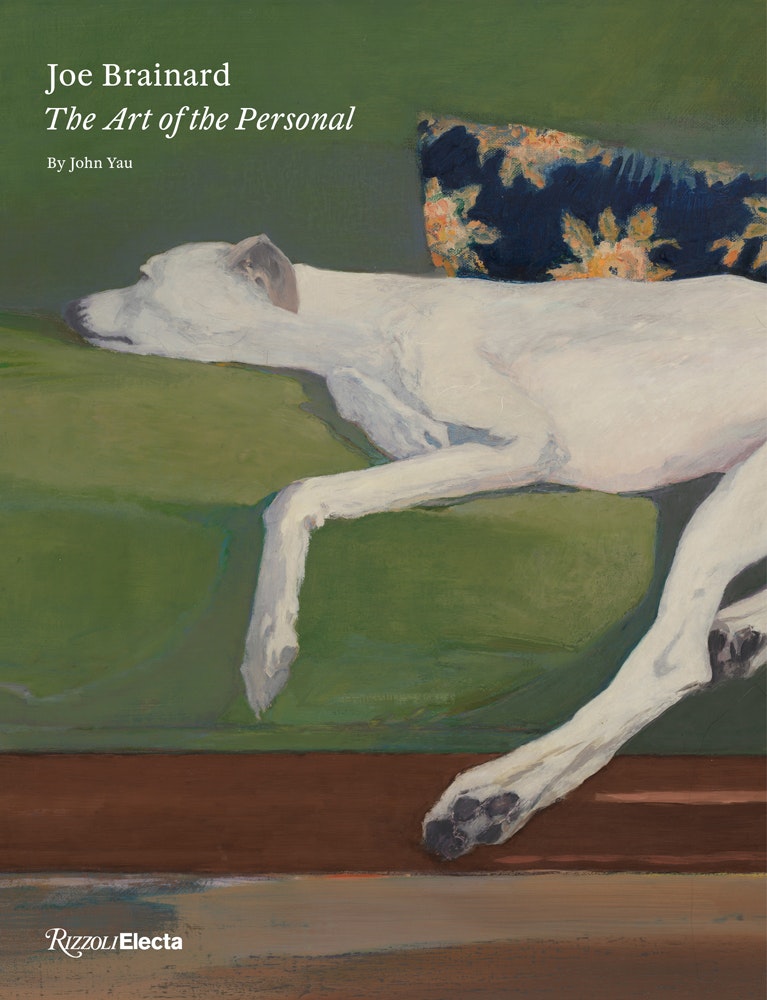
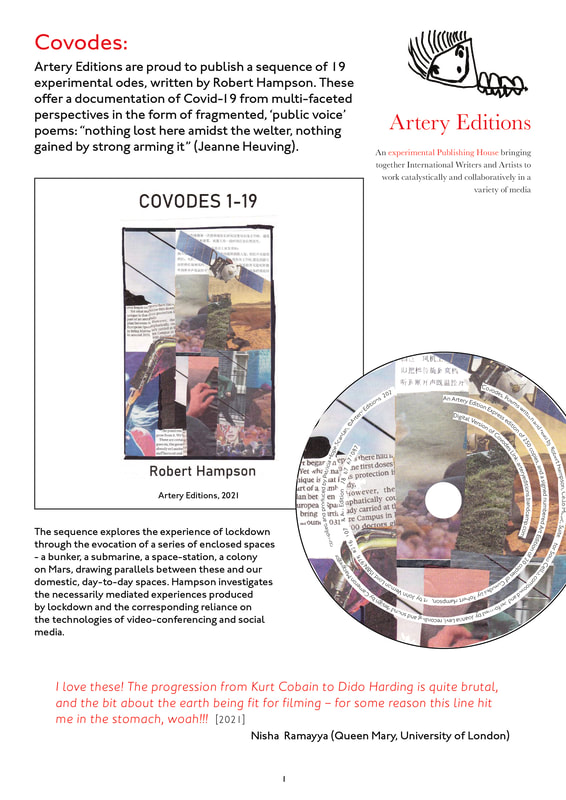
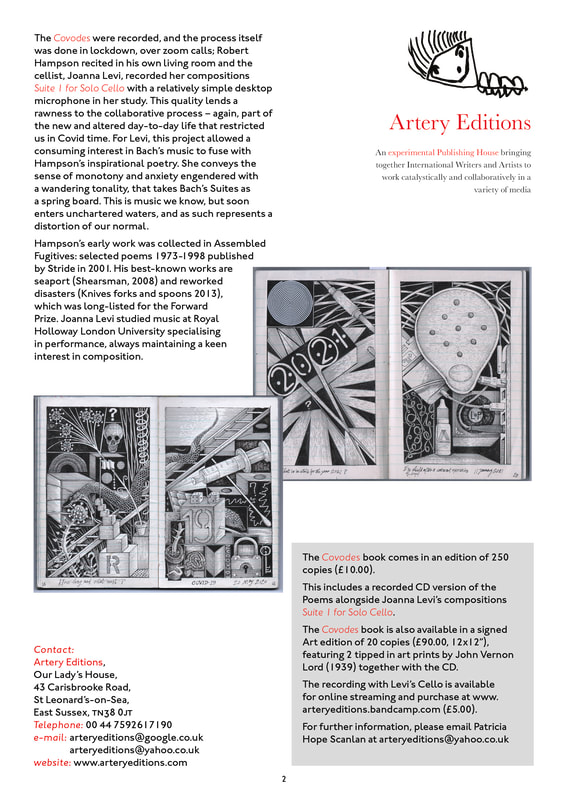
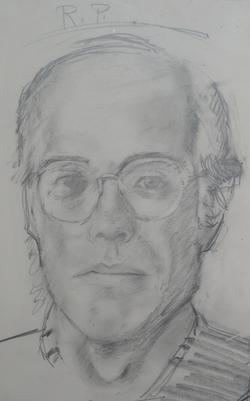
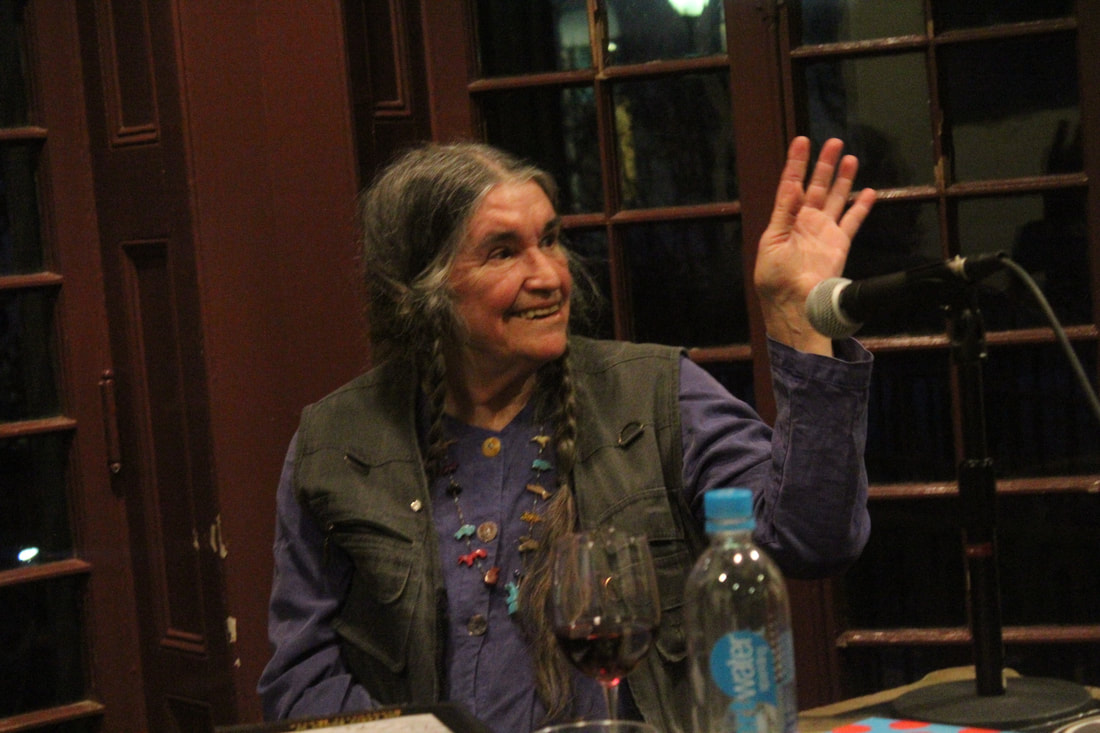
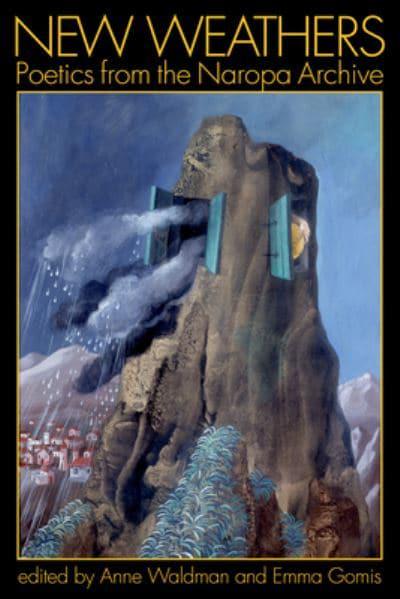
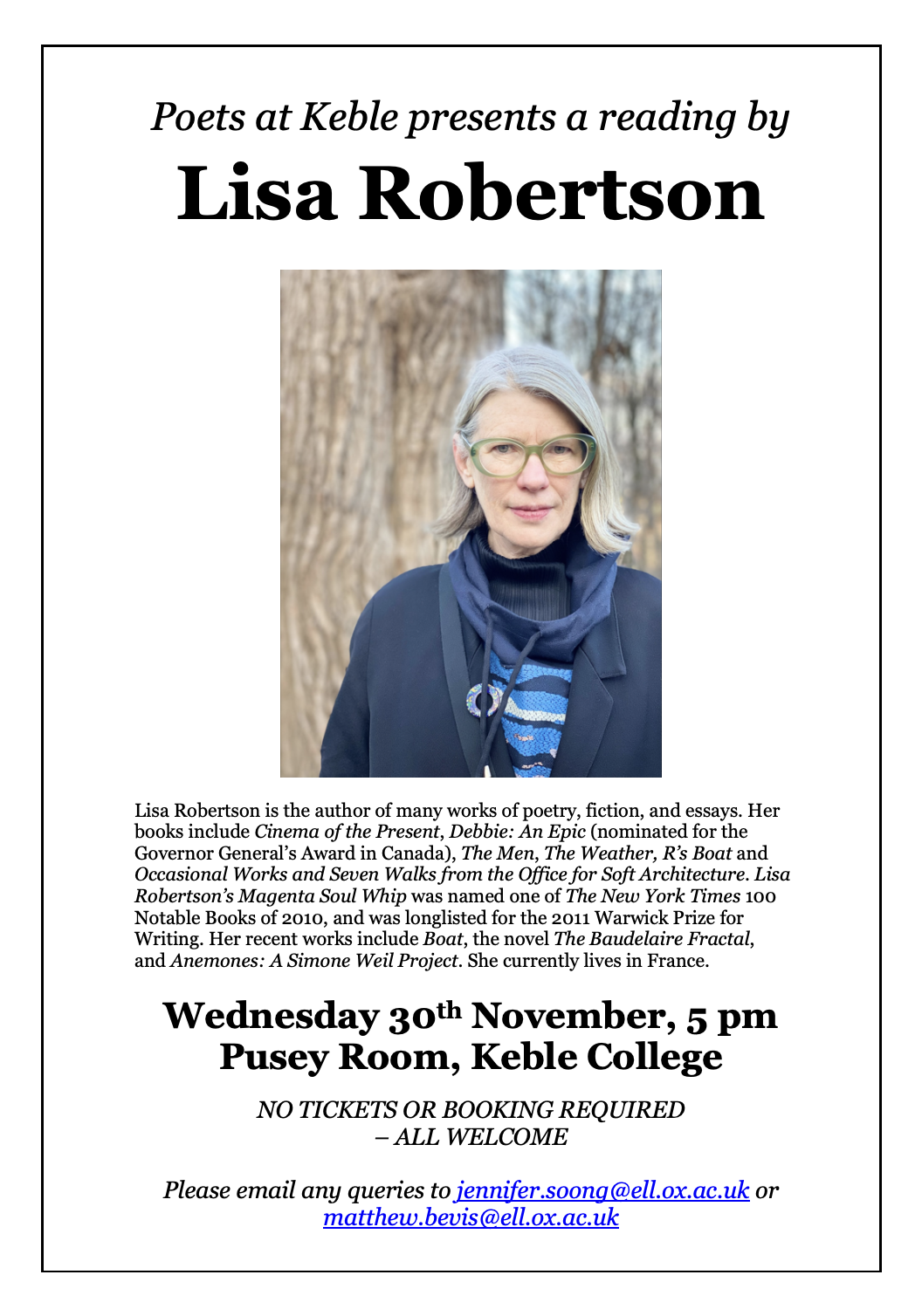
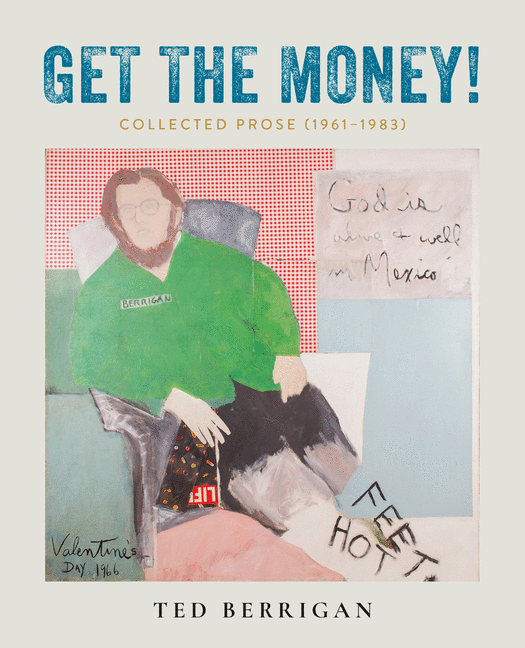
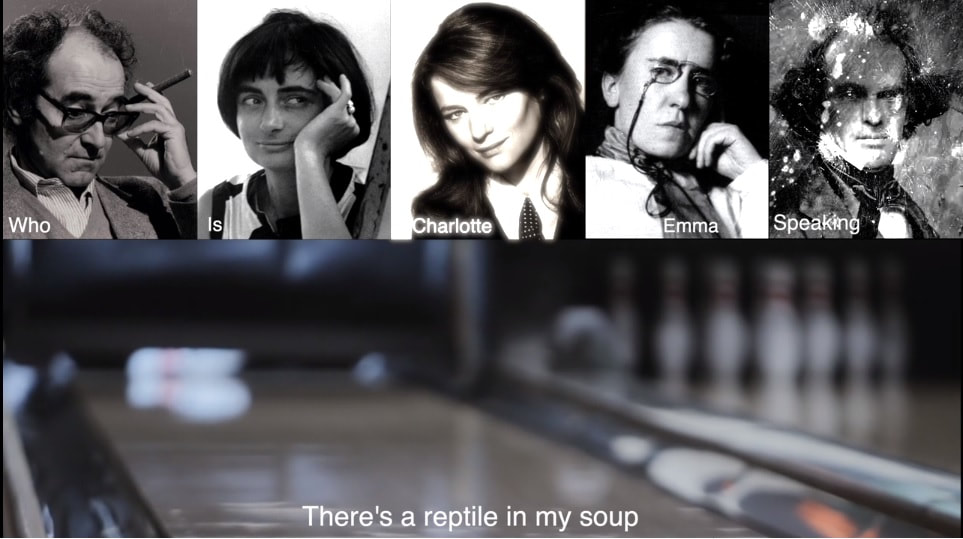
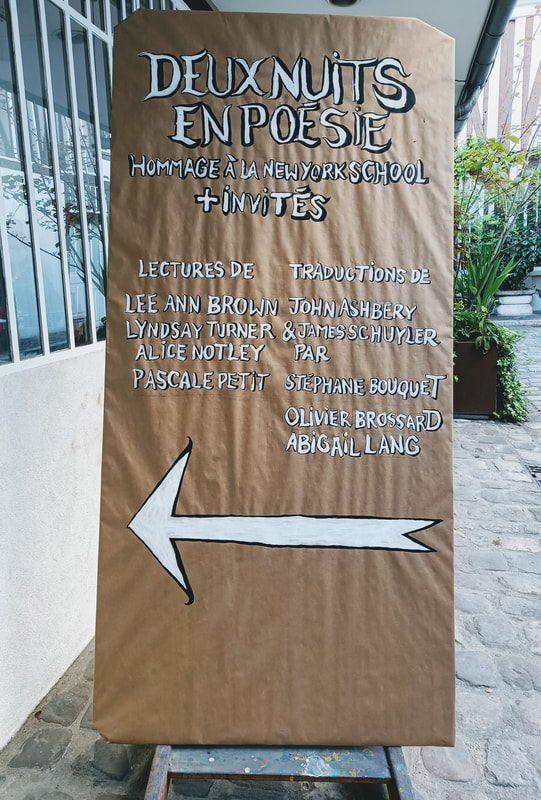
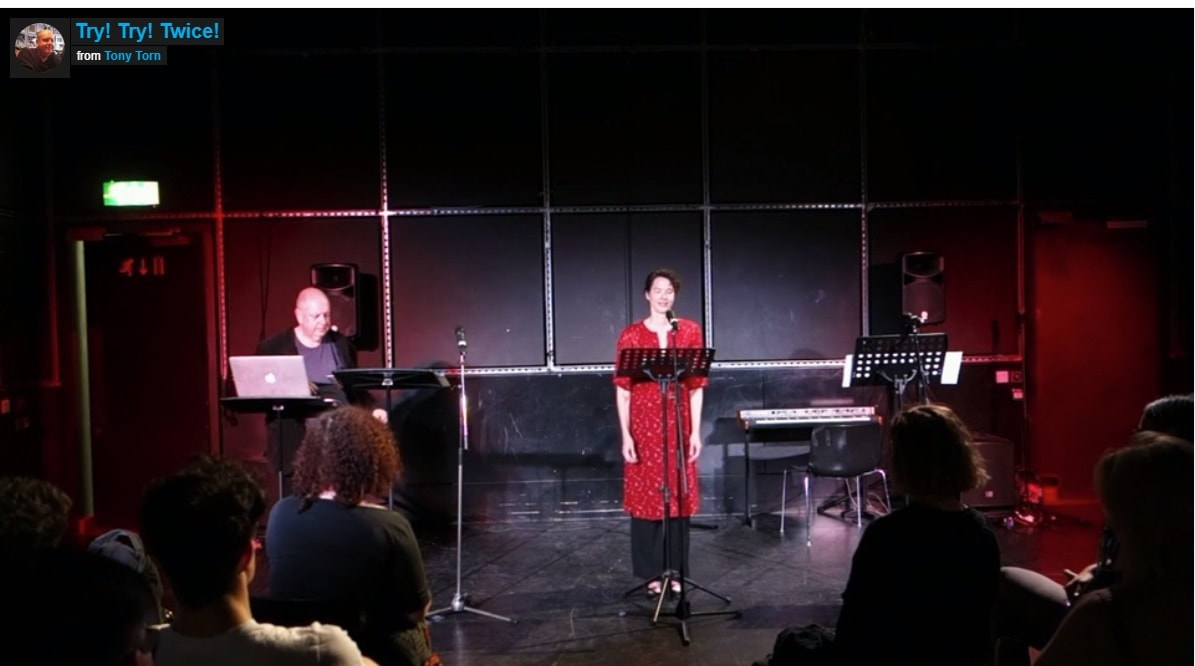
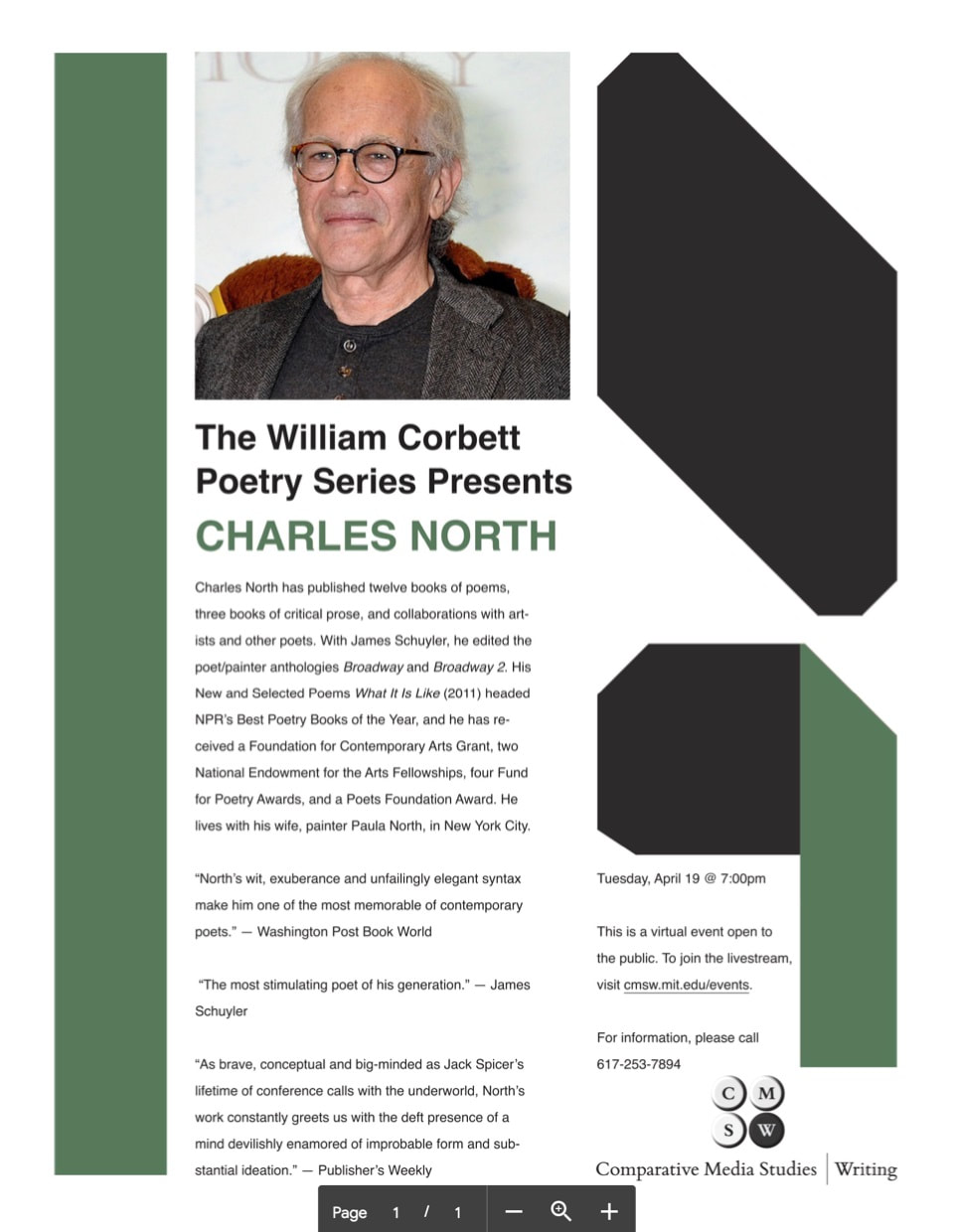
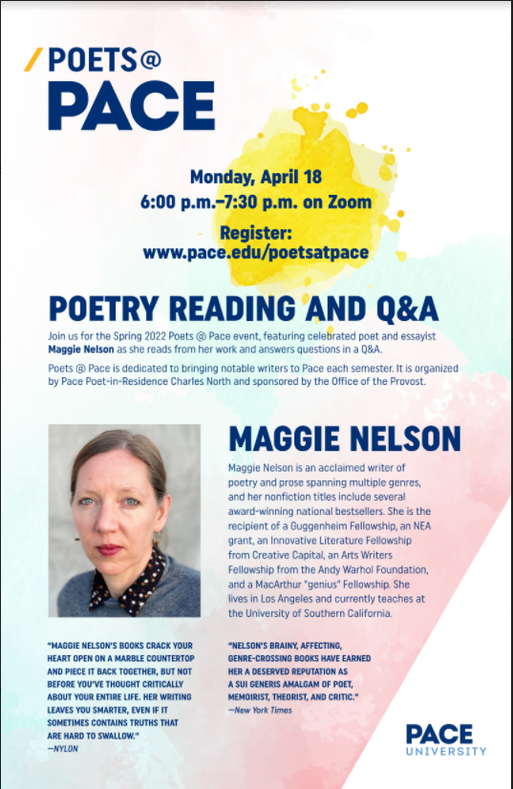
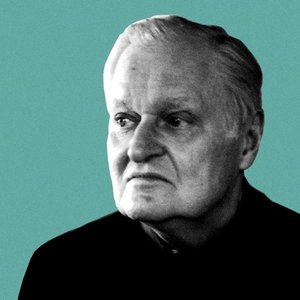
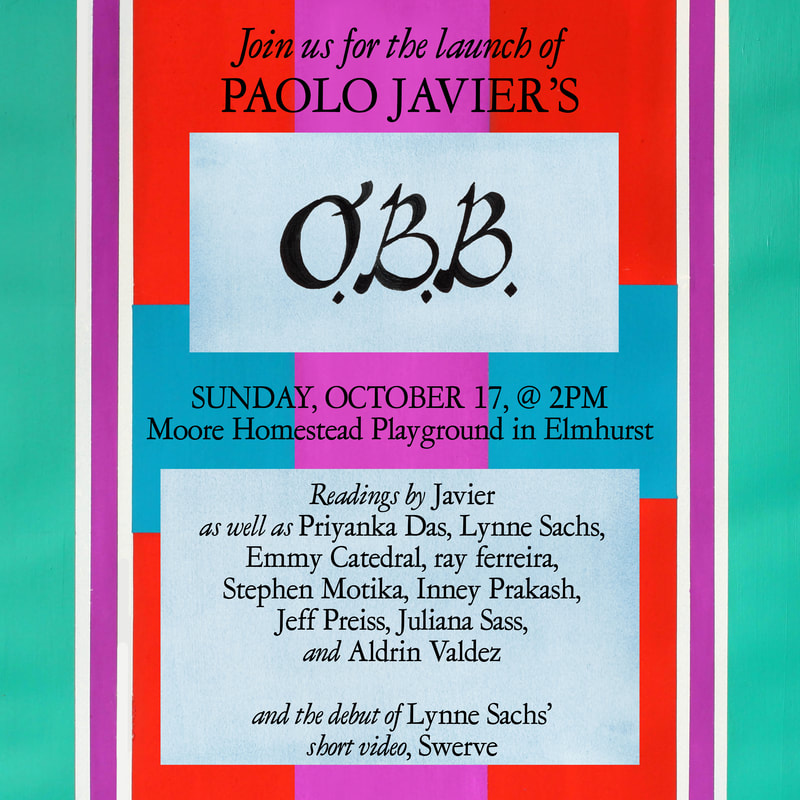
 RSS Feed
RSS Feed